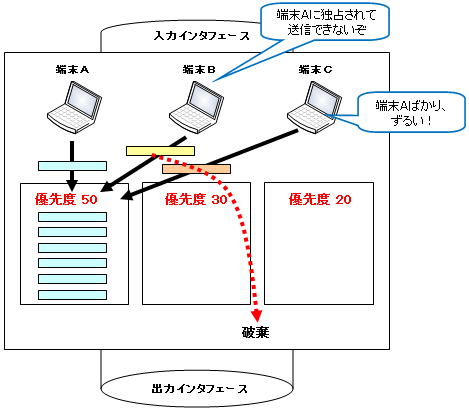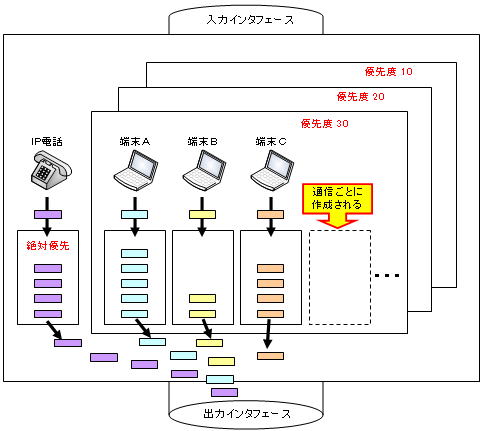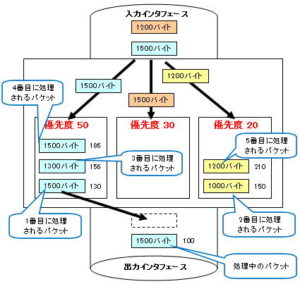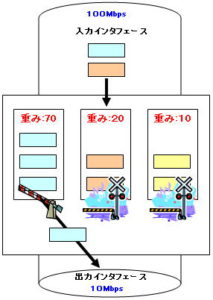QoS/priority control mechanism/PQ+WFQ
QoS/priority control mechanism/PQ+WFQ
So far, PQ and CQ have been introduced, but there are also methods that achieve QoS with more complicated processing. The processing method is a method that combines a method that divides queues with the same priority for each communication unit and multiple priority control methods.
High performance routers have products with such complex QoS implementations.
PQ+WFQ (Weighted Fair Queuing)
There are limits to the method of simply preparing queues for each priority. This is because within the same queue, it becomes first come, first served, and only specific terminals and specific communications are prioritized.

Therefore, WFQ was devised to distribute packets evenly within the same priority. WFQ identifies packets based on IP address and port number, and creates a dedicated queue for each communication. Also, even if the terminal is the same, if the destination or application is different, a dedicated queue will be created.

In this way, we avoid monopolizing and prioritizing certain terminals or certain communications.
A method that combines multiple priority control methods
When it comes to expensive high-performance routers, there are products that implement QoS by combining the advantages of multiple priority controls.
For example, there is CBWFQ that combines CQ that can define weighting and WFQ that can send packets equally for each communication. In addition, there are technologies that combine multiple priority controls and various QoS technologies for each vendor.
So far, priority control has been explained, but it cannot be said that QoS support is perfect.
No matter how much priority control is performed to control the output of packets to the exit interface, if the queue is full, packets will just continue to overflow at the previous stage of the queue.
Therefore, a mechanism called bandwidth control becomes important.


